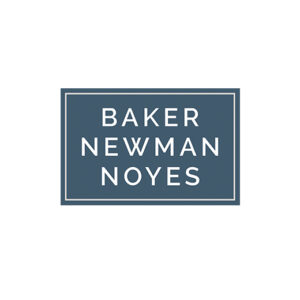2019 OPPS Final Rule

Each year, the Center for Medicare and Medicaid Services (CMS) updates the Outpatient Prospective Payment System (OPPS), the system by which eligible healthcare providers are paid for Medicare-covered outpatient services. The CMS released the 2019 OPPS final rule on November 12, 2018, which contains information regarding payment for Medicare-covered outpatient services starting January 1, 2019. The BNN Healthcare Advisory Group has put together a summary of some of the major items contained within this rule including:
- Outpatient Hospital Payment Rates
- Ambulatory Surgical Center (ASC) Payment Rates
- 340B Drug Program
- Inpatient Only (IPO) List
- Provider-Based Payment
- Packaging
- Hospital Outpatient Quality Reporting (OQR) Program
- Ambulatory Surgical Center Quality Reporting (ASCQR) Program
Outpatient hospital payment rates
For CY 2019 OPPS, the fee schedule increase factor is 1.35%. This increase is comprised of the 2.9% hospital inpatient market basket increase, less the 0.8% multifactor productivity (MFP) adjustment and a 0.75% reduction as initiated by the Patient Protection and Affordable Care Act of 2010. Hospitals that do not meet the Outpatient Quality Reporting requirements are subject to a 2.0 percent reduction from the fee schedule increase factor. CMS believes that this increase to OPPS payments will be mostly offset by the proposed changes to excepted off-campus provider-based department payments. See “Provider-Based Payment” section below.
Ambulatory Surgical Center (ASC) payment rates
CMS is updating ASC payments using the hospital market basket instead of the Consumer Price Index for all urban consumers (CPI-U). For CY 2019, increase to the ASC rates will be 2.1%. The update is based on the hospital market basket update of 2.9%, less the MFP adjustment of 0.8%. A 2.0% decrease is applied to ASCs that do not meet quality reporting requirements.
340B drug program
CMS is extending the 2018 final rule adjustment into 2019. The adjustment is to pay the average sales price minus 22.5% for 340B-acquired drugs furnished by non-excepted off-campus provider-based departments. This is a large decrease compared to the previous payment rate of average sales price plus 6%.
Inpatient Only (IPO) List
For CY 2019, CMS will remove four procedures and add one to the IPO list. The following four procedures will be removed:
- CPT code 31241: Nasal/sinus endoscopy, surgical; with ligation of sphenopalatine artery; will have an OPPS APC of 5153 with a status indicator of J1.
- CPT code 01402: Anesthesia for open or surgical arthroscopic procedures on knee joint; total knee arthroplasty; will be bundled for payment with a status indicator of N.
- CPT code 066T: Implantation or replacement of carotid sinus baroreflex activation device; total system (includes generator placement, unilateral or bilateral lead placement, intra-operative interrogation, programming, and repositioning, when performed); will have an OPPS APC of 5463 with a status indicator of J1.
- CPT 00670: Anesthesia for extensive spine and spinal cord procedures (e.g., spinal instrumentation or vascular procedures); will be bundled for payment with a status indicator of N.
The following procedure will now have an OPPS Status indicator of C and be added to the Inpatient only list.
- CPT C9606: Percutaneous transluminal revascularization of acute total/subtotal occlusion during acute myocardial infarction, coronary artery or coronary artery bypass graft, any combination of drug-eluting intracoronary stent, atherectomy and angioplasty, including aspiration thrombectomy when performed, single vessel.
Provider-based payment
CMS’s 2019 OPPS proposed rule introduced policies to reduce reimbursement for hospital outpatient clinic visits at off-campus provider based departments (PBD). The site neutral payment policies will affect grandfathered PBDs that have not historically had to face any payment reductions for services they provide. The proposal called for Medicare to move away from a system that pays more for a clinic visit in the hospital outpatient setting than in a doctor’s office. The idea is to move to what CMS described as “site neutral payments for clinic visits.”
The proposed change would reduce the payment rate for hospital outpatient clinic visits provided at off-campus provider-based departments by 60 percent; to match rates set by the physician fee schedule (PFS).
In the final rule, CMS finalized the proposal to pay for clinic visits provided in all off-campus PBDs at the PFS facility rate. CMS will phase in this policy for excepted off-campus PBDs (those paid at the OPPS rate in 2018) by paying 70% of the OPPS rate in 2019, then reducing payment to 40% of the OPPS rate for 2020 and future years. This phase-in policy allows CMS to implement site-neutrality for clinic visits while addressing concerns that a full payment reduction in 2019 may lead to instability.
To limit the expansion of services offered by these sites, CMS proposed limiting OPPS payments to services within an approved clinical family that were provided during a historical baseline period. Any new services provided outside of these families would be paid at the PFS rate. CMS did not finalize this proposal but will continue to monitor the expansion of services in off-campus PBDs.
This change would result in lower copayments for beneficiaries and savings for the Medicare program estimated to be $380 million for 2019.
Packaging
The 2019 OPPS Final rule did not revise the Medicare payment policies relative to ancillary service packaging for the calendar year. CMS did restate their authority and belief that they will continue to review and analyze all ancillary services provided as an integral part of APC paid procedures for future policy revisions.
“Medicare’s OPPS relies on the concept of averaging to establish a payment rate for services. The OPPS packages payments for multiple interrelated items and services into a single payment to create incentives for hospitals to furnish services more efficiently and to manage their resources with maximum flexibility.”
This supports their strategic goal of using larger payment bundles to maximize hospital incentives to provide care in a more efficient way. CMS believes packaging encourages hospitals to effectively negotiate with manufacturers and suppliers to reduce the purchase price of items and services. CMS also believes this encourages hospitals to explore alternative group purchasing arrangements; encouraging the most economical health care delivery.
There are two type of packaging policies used by CMS in pricing APCs:
-
- Unconditionally packaged services are services for which separate payment is never made because the payment for the service is always packaged into the payment for other services. Unconditionally packaged services are identified in the OPPS Addendum B with status indictor of N.
- See the OPPS website here for the most recent Addendum B HCPCS codes with status indicators.
- Unconditionally packaged services are services for which separate payment is never made because the payment for the service is always packaged into the payment for other services. Unconditionally packaged services are identified in the OPPS Addendum B with status indictor of N.
There are also services billed without HCPCs such as anesthesia, general supplies, drugs without HCPCs, recovery room that are considered to be unconditionally packaged. These are typically billed using revenue codes 37x, 27x, 25x and 71x on the UB04 (837I) claim.
- Conditional packaging are services or items that are not paid separately under certain circumstances. These items are billed with primary services assigned an APC and considered integral to the procedure or service. The same service or item when billed alone is paid separately. Conditionally packaged services are assigned a status indicator of Q1, Q2, J1 and J2.
- See the OPPS website here for the most recent Addendum B HCPCS codes with status indicators.
The concept of a packaged payment under OPPS for an item billed is associated with comprehensive APCs.
- A Comprehensive APC (C-APC) provides an all-inclusive payment for specific procedures. This policy packages payment for all items and services typically packaged under the OPPS. The single payment for a comprehensive APC excludes services that cannot be covered OPD services, and cannot by statute be paid under the OPPS. These services are typically paid by fee schedule or national payment amounts and will include screening mammograms, physical, occupational and speech therapy for example. Services included under the C-APC payment packaging policy are typically adjunctive to the primary service and provided during the delivery of the comprehensive service, and include diagnostic procedures, laboratory tests, and other diagnostic tests and treatments that assist in the delivery of the primary procedure; visits and evaluations performed in association with the procedure; un-coded services and supplies used during the service; the use of durable medical equipment as well as prosthetic and orthotic items and supplies when provided as part of the outpatient service; and any other components reported by HCPCS codes that represent services that are provided during the complete comprehensive service.
In support of CMS’s desire to create bigger payment bundles, for CY 2019, CMS has created three new comprehensive APCs (C-APCs) that will be affected by the packaging policy. These new C-APCs include ears, nose, and throat (ENT) and vascular procedures. This increases the total number of C-APCs to 65.
Hospital Outpatient Quality Reporting (OQR) Program
The Hospital OQR Program is a quality reporting program for outpatient hospital services. The Hospital OQR Program requires hospital outpatient facilities to submit data on quality measures and meet certain data collection requirements in order to avoid a reduction of 2.0 percentage points to their annual payment update.
CMS is finalizing the following changes to the OQR:
For the CY 2020 payment determination:
- OP-27: Influenza Vaccination Coverage Among Healthcare Personnel (removed)
- OP-32: Facility Seven-Day Risk-Standardized Hospital Visit Rate after Outpatient Colonoscopy (extending reporting period from one to three years)
For the CY 2021 payment determination:
- OP-5: Median Time to ECG (removed)
- OP-30: Endoscopy/Polyp Surveillance: Colonoscopy Interval for Patients with a History of Adenomatous Polyps – Avoidance of Inappropriate Use (removed)
- OP-9: Mammography Follow-up Rates (removed)
- OP-11: Thorax Computed Tomography (CT) – Use of Contrast Material (removed)
- OP-12: The Ability for Providers with HIT (Health Information Technology) to Receive Laboratory Data Electronically Directly into Their Qualified/Certified EHR System as Discrete Searchable Data
- OP-14: Simultaneous Use of Brain Computed Tomography (CT) and Sinus CT (removed)
- OP-17: Tracking Clinical Results between Visits (removed)
No new measures have been added to the OQR Program for 2019.
Ambulatory Surgical Center Quality Reporting (ASCQR) Program
Ambulatory Surgical Centers are required to submit data on certain quality measures identified by CMS to avoid reduction in payments.
CMS is removing one measure from the ASCQR Program Measure set, and adjusting another, for the CY 2020 payment determination and subsequent years as follows:
- ASC-8: Influenza Vaccination Coverage Among Healthcare Personnel (removed)
- ASC-12: Facility Seven-Day Risk-Standardized Hospital Visit Rate after Outpatient Colonoscopy (extending reporting period from one to three years)
CMS proposes to remove the following measure to the ASCQR Program Measure set for the CY 2021 payment determination and subsequent years:
- ASC-10: Endoscopy/Polyp Surveillance: Colonoscopy Interval for Patients with a History of Adenomatous Polyps – Avoidance of Inappropriate Use
No new measures have been added to the ASCQR Program for 2019.
If you would like to discuss any of these topics further, contact your BNN healthcare advisor at 800.244.7444.
Disclaimer of Liability: This publication is intended to provide general information to our clients and friends. It does not constitute accounting, tax, investment, or legal advice; nor is it intended to convey a thorough treatment of the subject matter.
